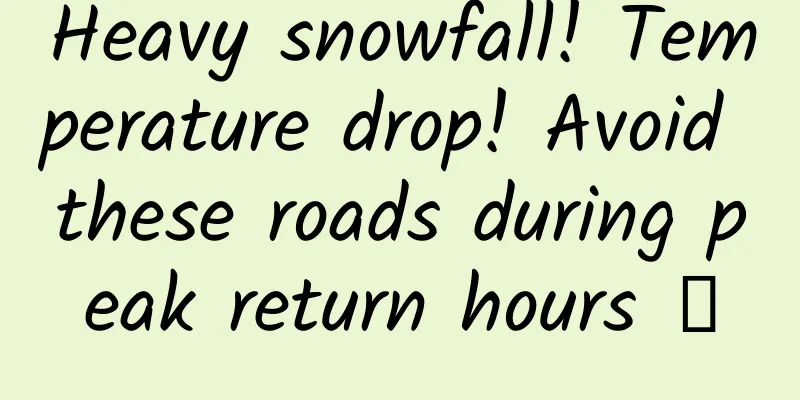Those winds that sound like they're not easy to mess with

|
Produced by: Science Popularization China Author: Meteorological Science Team Producer: China Science Expo Wind does a lot of work in nature - it mixes and balances heat and water vapor over a large area, regulates the temperature and humidity of the air; it carries clouds and rain to distant places, thus completing the water cycle on the earth. We cannot live without wind. Without wind, plants that rely on wind to spread pollen cannot spread and reproduce; polluted atmosphere cannot be diluted; sailboats cannot sail on the water; the air that many organisms rely on for survival will be like "stagnant water", extremely polluted... However, once the wind gets angry, it can be scary enough. 1. Foehn When air flows over a mountain ridge, a hot and dry wind called foehn is likely to occur on the leeward side. This wind does not occur as often as mountain winds, and it occurs under the condition of different air pressures on both sides of the mountain. When there is high pressure on one side of a mountain and low pressure on the other side, the air will move from the high pressure area to the low pressure area. When the air encounters a mountain during its movement, it is blocked and forced to rise, the air pressure decreases, the air expands, and the temperature decreases accordingly. The temperature drops by 0.6°C for every 100 meters the air rises. When the air rises to a certain height, the water vapor condenses when it encounters cold, forming rain and snow. When the air reaches the vicinity of the mountain ridge, it becomes thin and dry, then passes over the ridge and descends along the slope. During the descent, the air becomes dense again in the foehn wind and the temperature rises. The temperature of air rises by 1°C for every 100 meters it descends. Therefore, when air descends along a tall mountain range to the foot of the mountain, the temperature often rises significantly. Even if the air on the windward and leeward sides is at the same height, the temperature of the air on the leeward side is always higher than that on the windward side. Whenever a hot and dry foehn wind blows on the leeward slope, it often rains or snows on the windward slope. The harm of foehn wind is many. It often dries up fruit trees and crops, reduces yields, and causes fires in forests and towns to spread and cause losses. In the 19th century, several famous fires on the northern slopes of the Alps occurred when foehn winds were prevalent. In high mountain areas, foehn winds can melt a large amount of snow, causing floods in upstream river valleys; sometimes they can cause avalanches. If the terrain is suitable, strong foehn winds can cause local wind disasters, blowing off the roofs of mountain farmhouses, blowing down crops, uprooting trees, damaging forests, and even causing accidents to ships on lakes. Cornfield in the storm (Photo source: veer photo gallery) Foehn wind has disadvantages, but it also has advantages. Because it can accelerate the melting of winter snow, cattle and sheep can graze outdoors without waiting until next spring. Foehn wind also enriches local heat resources. For example, corn and grapes in Switzerland in the upper Rhone Valley mature due to the heat of the foehn wind; in neighboring areas that are not affected by the foehn wind, these crops are difficult to mature. 2. Dry hot air In early summer, some areas of my country often experience a high temperature and low humidity wind, which is called dry hot wind, also known as "hot wind", "fire wind", "drought wind", etc. It is a specific weather phenomenon that lasts for a short time (usually about 3 days). Due to the different natural characteristics of different places, the causes of dry hot winds are also different. In early summer every year, the climate in inland areas of my country is hot, with little rain, strong temperature rise, and rapid decrease in air pressure, forming a strong continental thermal low pressure. Around this thermal low pressure, the pressure gradient increases with the increase in the temperature of the air mass, so the dry and hot air flow rotates around the thermal low pressure, forming a dry and hot wind, which is the dry hot wind. Strong dry hot winds can cause damage to local wheat, cotton, melons and fruits. Drought-stricken corn fields (Photo source: veer Photo Library) The damage of dry hot wind to crops is mainly due to the fact that high temperature, drought and strong wind force the evaporation of air and soil to increase, which consumes the water in crops very quickly, thus destroying chlorophyll and other pigments, hindering the photosynthesis and synthesis process of crops, and causing plants to dry up quickly from bottom to top. In particular, dry hot wind often harms crops together with drought. The roots of crops cannot absorb the water they should, and the dry hot wind takes away a lot of water from the stems and leaves, causing the crops to wilt and die faster. 3. Tornado Tornado got its name because it resembles the dragon from the East China Sea that emerges from the waves and rides on the clouds in ancient mythology. We know that a tornado is a violently rotating circular air column. From a distance, it not only looks like a giant python dangling in the air, but also like an elephant's trunk swinging constantly. Tornado (Photo source: veer photo gallery) How did this big "elephant trunk" come into being? Tornadoes in nature are born in thunderstorm clouds. In thunderstorm clouds, the air is very turbulent and the temperature difference between the upper and lower parts is very large. On the ground, the temperature is about 20 degrees Celsius, and the higher you go, the lower the temperature. At the top of the cumulonimbus cloud, more than 8,000 meters above sea level, the temperature is as low as minus 30 degrees Celsius. In this way, the cold air above drops rapidly, and the hot air below rises violently. When the rising air reaches a high altitude, if it encounters a strong horizontal wind, it will force the rising air to "hang upside down" (rotate downward). Due to the alternating disturbance of the upper air, a rotation effect is generated, forming many small vortices. These small vortices gradually expand. The up and down agitation becomes more and more intense, and finally a large vortex is formed. When a tornado appears, there is usually more than one. Sometimes two or even more "trunks" - funnel clouds - can appear from the same cumulonimbus cloud. However, some of the "trunks" have just begun to extend downward, while the lower ends of some have already touched the ground or are retracting into the cloud after touching the ground, and some extend and retract at the bottom of the cloud and never reach the ground. How high is the wind speed in a tornado? People still cannot measure it, because any anemometer cannot withstand its destruction. In extreme cases, it can even reach 300 meters per second or exceed the speed of sound. What is particularly scary is the low pressure inside a tornado. This low pressure can act like a special suction pump, often sucking up the water, dust, trees, etc. it touches, forming a tall column. This is what people used to call "dragon hanging upside down" or "dragon sucking water". If the explosive effect and huge wind force of a tornado work together, the damage and losses they cause will be extremely serious. |
Recommend
Don't eat! Don't eat! Don't eat!
Sugarcane is a sweet and juicy fruit Always popul...
From "following" to "leading"! 27 years ago today, my country successfully developed the Galaxy-III supercomputer
On June 19, 1997, the "Galaxy-III" para...
Is laser surgery for myopia, which uses laser to "carve" the cornea quickly and accurately, safe?
...
This is the best of times, and the worst of times
This is the worst of times, the worst of times—so...
How can Microsoft reverse and save itself after suffering the biggest net loss in history?
The hero falls to the bottom of the valley when h...
How do colored diamonds come about? They lose color after being polished!
Diamonds are rare and precious, and are even equa...
Does "age odor" exist? Do elderly people have a special smell?
Leviathan Press: Many people have probably smelle...
The spicy dried fish that costs one yuan a pack, are they the retired fish from the foot massage shop?!
When you are savoring the spicy dried fish in you...
App promotion is at a bottleneck? 7 ways to solve your problems!
We all know the importance of App marketing . If ...
Flying needles and threads! Fibers that “weave” smart fashion
The 1990s was a boom period for Hong Kong's g...
Why is space still pitch black even though the universe is filled with stars?
1. Why is the night sky of Earth never illuminate...
Huawei G7 review: 1999 yuan metal body and great battery life
At the IFA exhibition held in Germany in early Se...
Japanese drama "Liar Game" full two seasons + movie version HD Japanese plug-in Chinese subtitles
Chinese name: Fraud game/Scam game Foreign name: ...
Fire breaks out in high-rise buildings! These safety tips can save lives →
December 11 Notice from Shenzhen Fire Rescue Deta...
Business English Lectures for Beginners, Intermediate and Advanced Levels
Explain business English in the workplace in detai...









